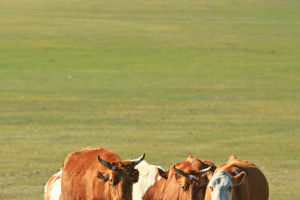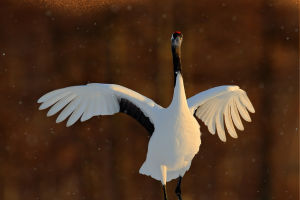The only animal that can fascinate all human beings is the giant panda. The giant panda is black and white, and it is a ferocious large mammal. But the fluffy, round body always makes people have a naive evaluation of it while ignoring the fact that it can easily kill a human being.
The giant panda has lived on the earth for more than 8 million years and is one of the oldest creatures on the earth, and is known as a living fossil. They are stout, with round heads and short tails. Giant pandas can generally grow to 1.2 to 1.8 meters in height and weigh 80 to 120 kilograms.
Black and white coat color and dark circles are their most typical appearance characteristics.
Although giant pandas are huge, they are very sensitive. Giant pandas can climb trees, and can even climb to 20 meters high trees. Generally, they climb trees to play, scout their surroundings, nap or avoid danger. Sometimes, during the fight between the two pandas, the weaker one will climb the tree to avoid the "bullying" of the companions.
Under normal circumstances, giant pandas have a docile personality. When meeting people for the first time, giant pandas will cover their round faces with their two fat front paws, or bury their heads deep in their stomachs, as if shy and reluctant to meet people.
To protect giant pandas, China has established several giant panda conservation stations and nature reserves. As of October 1, 2021, there are 673 giant pandas in captivity and 1,864 wild giant pandas worldwide. Wild giant pandas live in the mountains and forests at an altitude of 2,000 to 3,500 meters on the eastern edge of the Qinghai-Tibet High Plains.
Captive giant pandas live in Sichuan and Shaanxi giant panda breeding bases and large zoos at home and abroad.
The giant panda spends most of the time except sleeping, either eating bamboo or collecting bamboo. Because of its short intestinal tract, the digestibility of bamboo is extremely low. It takes 9 jin to eat 10 jin. In addition, bamboo has little nutrition, so it needs to eat dozens of jin every day. Giant pandas have to sleep in the middle of every two meals.
They sit and lie down most of the time, and they rarely walk. Because only by reducing energy consumption, can the long-term nutritional deficiencies caused by eating bamboo be combated.
Although giant pandas have a docile temperament, the leopards and jackals around them never dare to bully them. Because in the eyes of these beasts, an adult giant panda is a big bear, and they can tear up hard bamboo with ease.
According to research, the ancestors of giant pandas ate meat and were forced to eat bamboo in order to survive during the Quaternary Ice Age. So far, the digestive system has not changed much, and it also eats meat (such as bamboo rats), so it is still classified as Carnivora.
Giant pandas are very smart. We choose fresh Lengjianzhu and Bamboo with short buds and other high-quality varieties to eat and eat bamboo shoots in spring and summer, bamboo leaves in autumn, and bamboo stalks in winter to obtain more nutrients and moisture, and to better avoid scratching the mouth.
The giant panda's hair is thick and hard, about 10 centimeters in length, and the skin is thick and elastic. This may be the fundamental reason why giant pandas climb up those small trees that obviously do not match their stature, and are not afraid of falling.
The lifespan of wild giant pandas is 18 to 20 years old, while captive giant pandas have been greatly extended under the careful care of humans. For example, the "Xin Xing" of Zoo lived for 38 years and 4 months, which is also the longest lifespan of a captive giant panda.
In some nature reserves, breeders wear "panda suits" when examining giant pandas. It is said to make it feel that it is not a human, but a giant panda that’s giving them the body check, to reduce the dependence on the breeder and return to the wild smoothly.


